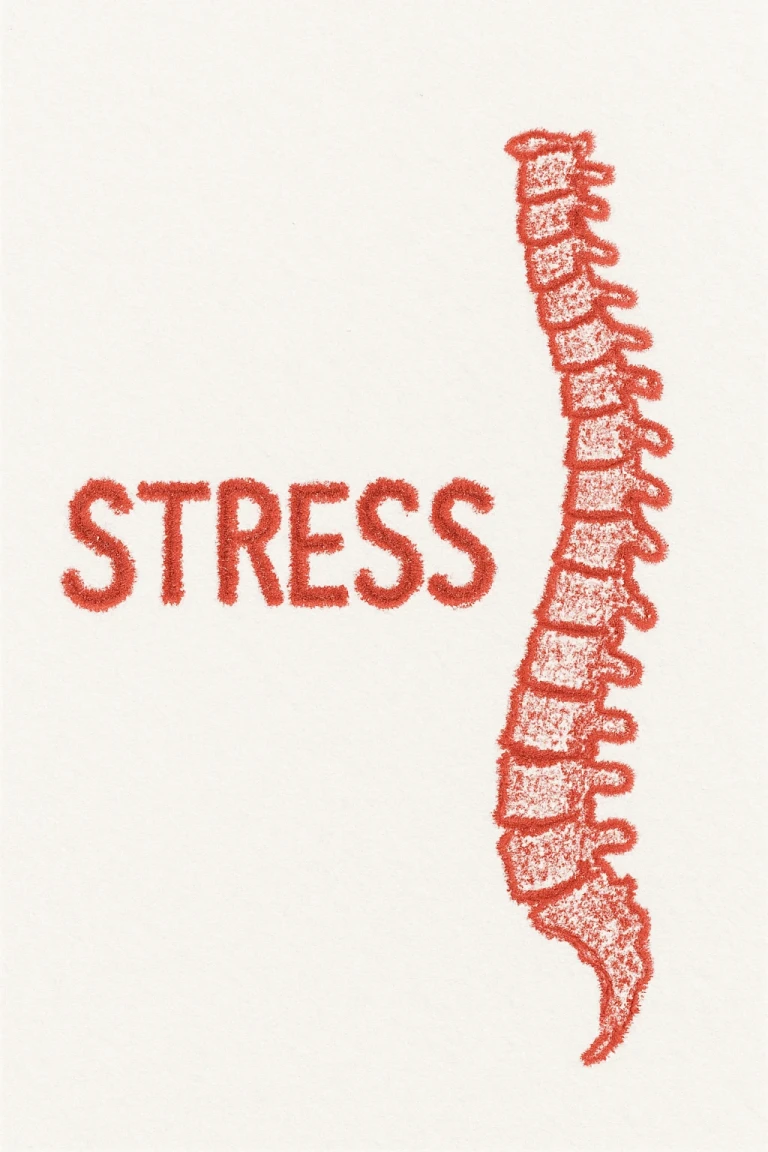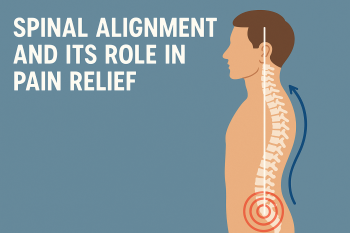
Most people associate chiropractic care with back pain or stiffness, but the upper cervical spine, the atlas (C1) and axis (C2), plays a unique role.
This area houses critical pathways for the brainstem and nervous system. Even subtle misalignments here can disrupt nerve communication, trigger muscle tension, and interfere with the body’s ability to regulate stress.
A review in Frontiers in Neurology (2019) noted that dysfunction in the cervical spine can influence autonomic nervous system balance, potentially contributing to increased sympathetic (“fight-or-flight”) activity. In other words, neck health and stress aren’t as separate as they may appear.
Stress and the Nervous System: More Than Just “In Your Head”
Chronic stress isn’t only a mental experience—it manifests physically through tightened muscles, disrupted sleep, digestive issues, and headaches. The culprit is often the sympathetic nervous system staying switched on too long.
Upper cervical chiropractic adjustments aim to restore balance by reducing pressure on neural pathways near the brainstem. When this happens, patients often report not just less pain, but an unexpected calm or sense of mental clarity.
A pilot study in the Journal of Upper Cervical Chiropractic Research (2015) found that patients receiving upper cervical adjustments reported improvements in stress levels, sleep quality, and overall well-being. While the sample was small, the trend suggests a mind-body ripple effect worth further investigation.
The Vagus Nerve Connection
Perhaps the most fascinating link is the vagus nerve, a key component of the parasympathetic nervous system. It passes near the upper cervical region and directly influences heart rate, digestion, and emotional regulation.
Research in Frontiers in Psychiatry (2021) highlights how vagus nerve stimulation can reduce anxiety and improve resilience to stress. While chiropractic adjustments aren’t the same as electrical stimulation, by reducing cervical tension and restoring alignment, they may support vagal tone and help the body switch back into “rest and digest” mode.
What Patients Notice Beyond Pain Relief
The benefits reported after upper cervical care often go beyond looser muscles:
- Improved sleep – less tossing, fewer headaches.
- Emotional steadiness – a reduced sense of being “on edge.”
- Clearer focus – less brain fog, better concentration.
- Physical ease – reduced jaw clenching, shoulder tightness, or tension headaches.
These changes align with what we know about the nervous system’s response when stress pathways are dialed down.
Integrating Care for Lasting Stress Relief
It’s worth noting: chiropractic care isn’t a magic eraser for life’s stressors. Deadlines, family dynamics, and world events remain. What changes is how the body processes those stressors.
When upper cervical adjustments are paired with mindfulness practices, gentle exercise, and consistent sleep, the effects compound. The nervous system learns to reset more easily, and the body doesn’t stay “stuck” in fight-or-flight mode.
A Gentle Nudge Toward Balance
Stress may never disappear, but the body’s relationship to it can transform. Upper cervical chiropractic care, though subtle in technique, can have surprisingly wide-reaching effects, calming the nervous system, supporting vagal tone, and allowing both body and mind to breathe a little easier.
It’s a reminder that sometimes the smallest adjustments, in the spine or in life, open the door to the greatest sense of balance.
References
Budgell, B. S. (2000). Reflex effects of subluxation: The autonomic nervous system. Journal of Manipulative and Physiological Therapeutics, 23(2), 104–106.
Henderson, C. N. R. (2019). The role of the cervical spine in autonomic nervous system regulation. Frontiers in Neurology, 10, 445.
Zhang, Y., et al. (2021). Vagus nerve stimulation and its role in modulating stress and anxiety. Frontiers in Psychiatry, 12, 664322.
Elster, E. L. (2015). Upper cervical chiropractic care and quality of life in patients with chronic health conditions: A pilot study. Journal of Upper Cervical Chiropractic Research, (1), 13–23.







Leave a comment